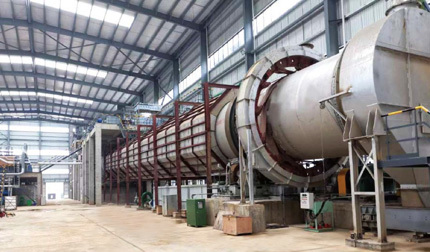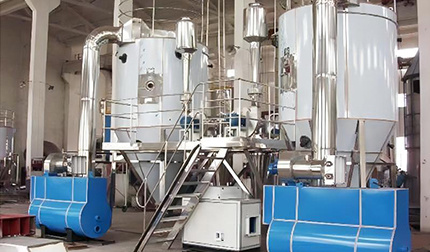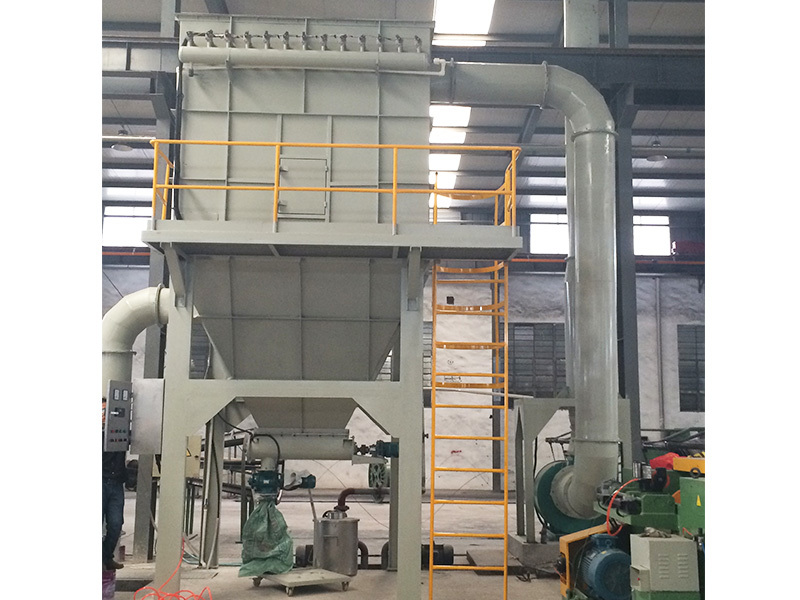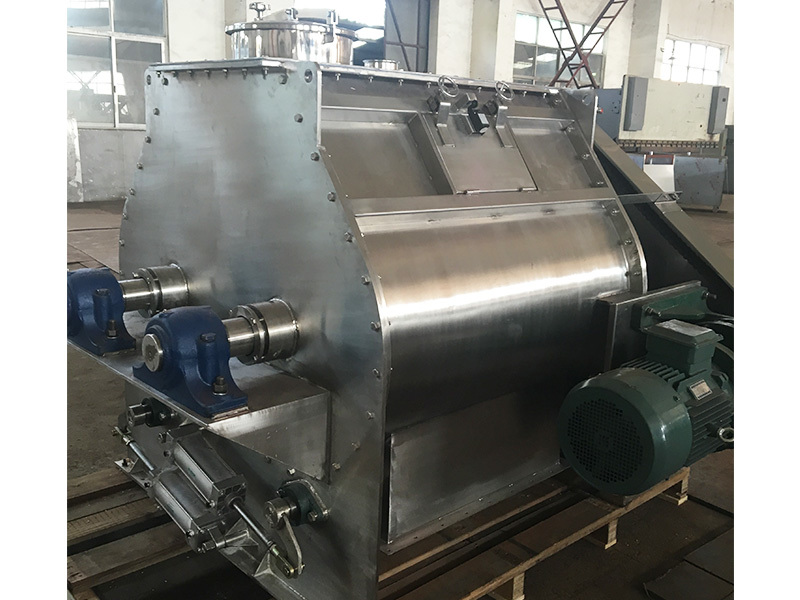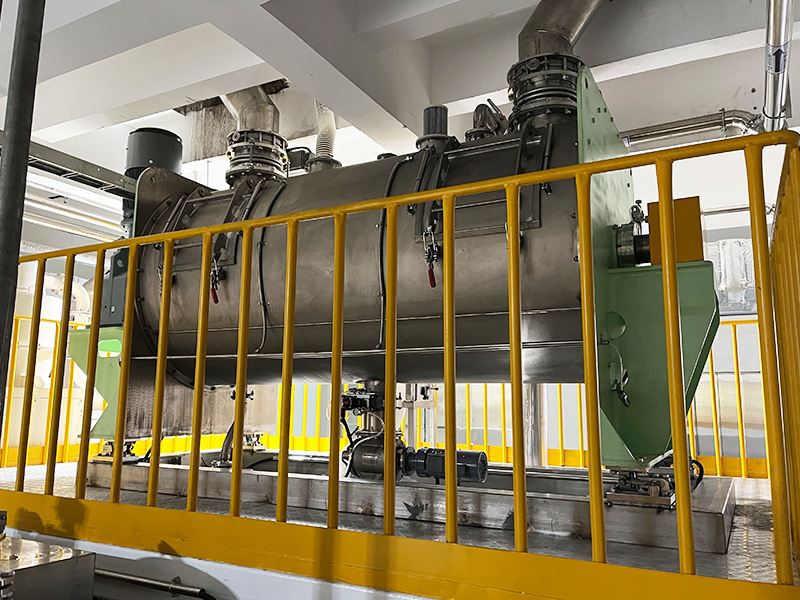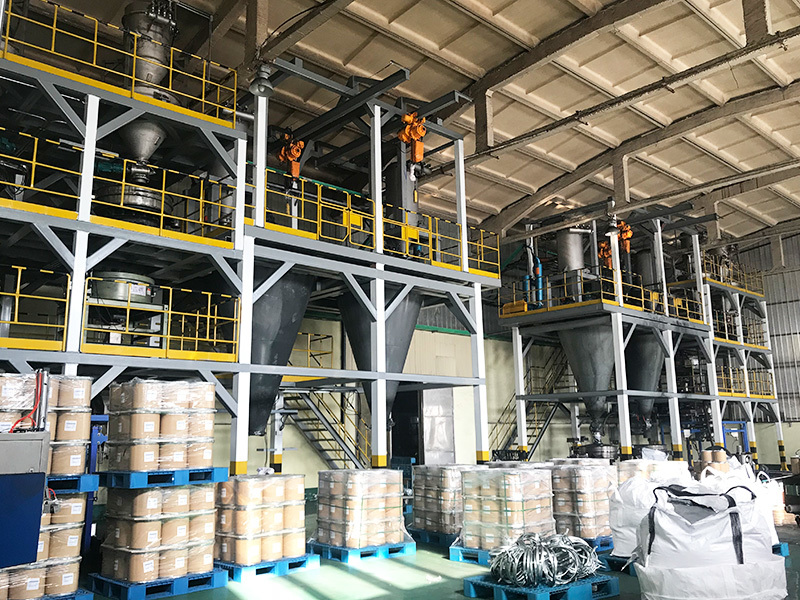
PLG-Z type vacuum disc dryer
Category: Vacuum dryer series
Product overview
The vacuum disc dryer is suitable for drying heat-sensitive materials with low drying temperature, such as drugs, vitamins, biological products, enzymes, solvent-containing materials, etc. Wet materials are added in batches into a quantitative feeder capable of negative pressure. After the vacuum pump is turned on to make the disc dryer in a negative pressure state, the materials are evenly added into the dryer through a continuous lock for drying operation, and the dried materials are discharged from the discharge port at the bottom of the dryer. The moisture that escapes from the feed is recovered through a condenser and a solvent receiving tank, and the entire operation is carried out under vacuum.
Equipment Overview
Disc dryer, also known as disc dryer, or plate dryer (Plate Dryer), is a kind of mechanical stirring conduction drying equipment, developed on the basis of fixed bed conduction dryer and rake type stirring conduction dryer. In the 1950 s and 1960 s, the former Soviet Union had already used it to dry large quantities of lignite. However, due to the low level of industrialization at that time, the price of this complex drying equipment was too high, and it was difficult to promote it to other industries. It was also replaced by a tubular dryer with lower operating cost in the coal industry. The progress and development of the dryer was limited. Tong Rongliang San only cited one example of inorganic salt in the application of disc dryer in his 1975 edition of "Drying Device. By the end of the 1970 s, with the continuous progress of production methods in industrialized countries, processing costs are no longer the main problem that plagues people. Coupled with the use of new materials and the shortage of energy in all areas, disc dryers have once again entered people's field of vision with their outstanding energy-saving advantages. Germany, Belgium, Japan, the United States, Russia and other countries have specialized companies to research and manufacture disc dryers. Among them, the German Krauss-Maffei Company, which has a long history and is more successful, has developed and manufactured a series of products of TT/TK (normal pressure type), GTT (closed type) and VTI (vacuum type) tray dryers, and has successfully extended it to the chemical, food and pharmaceutical industries, evolving from the eldest black coarse equipment for drying coal to modern fine chemical equipment.
The straight and empty tray dryer is suitable for drying heat-sensitive materials with low drying temperature requirements, such as drugs, vitamins, biological products, enzymes, solvent-containing materials, etc. Wet materials are added to the quantitative feeder capable of negative pressure in batches, the vacuum pump is turned on to make the disc dryer in a negative pressure state, and the materials are evenly added into the dryer through the continuous lock for drying operation, and the dried materials are discharged from the discharge port at the bottom of the dryer. The moisture that escapes from the feed is recovered through a condenser and a solvent receiving tank, and the entire operation is carried out under vacuum.
Working principle
Wet materials are continuously added to the drying tray of the upper layer of the dryer by the feeder, and the rake arm with rake leaves rotates to make the rake leaves continuously copy the materials. The material flows through the surface of the drying tray along the exponential spiral line. The material on the small drying tray is transferred to the outer edge and falls to the outer edge of the lower large drying tray at the outer edge. The material moves inward on the large drying tray and falls into the next layer of small drying tray from the middle blanking port. The size of the drying plate is arranged alternately up and down, and the material can flow continuously through the whole dryer. Hollow drying plate into the heating medium, heating medium saturated steam, hot water and heat transfer oil, heating medium from one end of the drying plate into, from the other end of the export. The dried materials fall from the next layer of drying tray to the bottom of the shell, and then are transferred to the discharge port by rake leaves for discharge. The wet part escapes from the material and is discharged from the wet discharge port on the top cover. The dry material discharged from the bottom layer can be directly packaged. The vacuum disc dryer is to lower the boiling point of the low moisture in the state below the normal pressure, remove the moisture in the material, and achieve the purpose of low temperature drying. The vacuum pump is used to dehumidify, so that the vacuum state is formed in the working chamber, and the drying speed is accelerated. Vacuum dryer is divided into static dryer and dynamic dryer, vacuum disc continuous dryer is a dynamic vacuum dryer. The seal between the upper and lower shafts of the vacuum disc dryer requires the concentricity between the upper and lower shafts of the processing precision. First, filler can be added and mechanical seal can be added, cylinder welding, weld test and pressure test, and continuous vacuum ball valve control for feeding. All these are leakage points. Every link is not in place, which will affect the vacuum degree. Therefore, every link must be carefully worked to ensure the high vacuum disc dryer.
Main features
Disc dryer is a typical conduction heating dryer. The heating of materials only depends on the heating wall surface. The drying process does not use or only uses a small amount of dry gas to carry moisture. The heat lost due to exhaust is very small, and the thermal efficiency is high, which can reach 100 in theory, 60% ~ 80% in practice, with low energy consumption and unit steam consumption of 1.3~1.6kg steam/kg water.
Due to the special stirring device, the material layer is thin, the stirring intensity is large, the heating surface renewal rate is high, the area of the material exposed to the outside is almost larger than that of all conductive drying equipment, the heat and mass transfer resistance is small, the efficiency is high, and the total heat transfer coefficient can reach 250 ~ 670kj/(m2.h.℃).
Because the material layer is thin, the stirring effect is good, the dry and wet materials in the material layer and the upper and lower materials are well mixed, the drying time of the materials is much shorter than that of the general conduction dryer, mostly within 5~60min, and the discharge temperature is relatively low, which can be suitable for heat-sensitive materials with less strict requirements.
By changing the heating temperature of the drying plate, the number of layers, the number and rotation of the rake rod, the structure and quantity of the rake leaf and the thickness of the material layer and other parameters, the drying time can be controlled, the material flow is not back mixed, so that a uniform dry product can be obtained, and the material with extremely low final water content requirements can also be completed at one time.
Agitator speed is low, the material crushing effect is small, can maintain the complete crystal type of crystal material, at the same time, the agitator power consumption is small, with the motor and reducer are less than other rotary conduction drying equipment.
Drying is mainly carried out by the heating plate, no hot air or only a small amount of hot air is introduced, the air speed in the section of the dryer is low, and the dust entrainment is small. In some cases, the dust separation system can even be omitted, simplifying the process.
Dryer can be normal pressure operation, can also be closed or vacuum, positive pressure operation, can recover the solvent, is very suitable for heat sensitive, flammable and explosive, toxic materials drying a wide range of applications.
Vertical structure, small footprint.
No dust, low noise, no vibration, in line with environmental requirements.
Compared with other types of drying equipment, the structure is more complex, the processing is more difficult, and the cost is higher. (11) Because the material in drying cannot be highly dispersed like convection drying, the material layer has a certain thickness, the comprehensive drying rate is generally lower than the convection drying method, and the dryer with the same processing capacity is usually larger than the convection drying method.
Scope of application
★In recent years, vacuum disc dryer with its excellent energy-saving characteristics, has been fully affirmed by the domestic and foreign engineering circles, in the chemical industry, dyes, plastics, pesticides, medicine, mineral food and agricultural and sideline products processing and other fields of application is becoming more and more widely, such as activated carbon, activated calcium carbonate, superfine calcium carbonate, boric acid, dyes and dye intermediates, nicotinic acid. Products, salt, caffeine, sodium cyanide, aluminum fluoride, acrylate, cellulose derivatives, melamine, plastic additives, foaming agents, accelerators, sodium hydrosulfite, vulcanizing agents, sulfur, citric acid, fumaric acid, vitamin C and its intermediates, lanthanide compounds, mycelium, sterilizing agents, synthetic resins, bisphenol A, threonine, Meneb, pharmaceuticals, organic products, sucrose, sulfur concentrate, nickel concentrate, polymethyl leaven, ammonium nitrate, potassium sulfate, barium sulfate, potassium sulfate, sodium phosphate, sodium hydroxide wait.
★Can be widely used in various industries containing water or solvent, easy flow, non-bonding, loose powder granular, crystalline, amorphous materials continuous heating in drying and cooling processing.
Previous Page
Next Page




